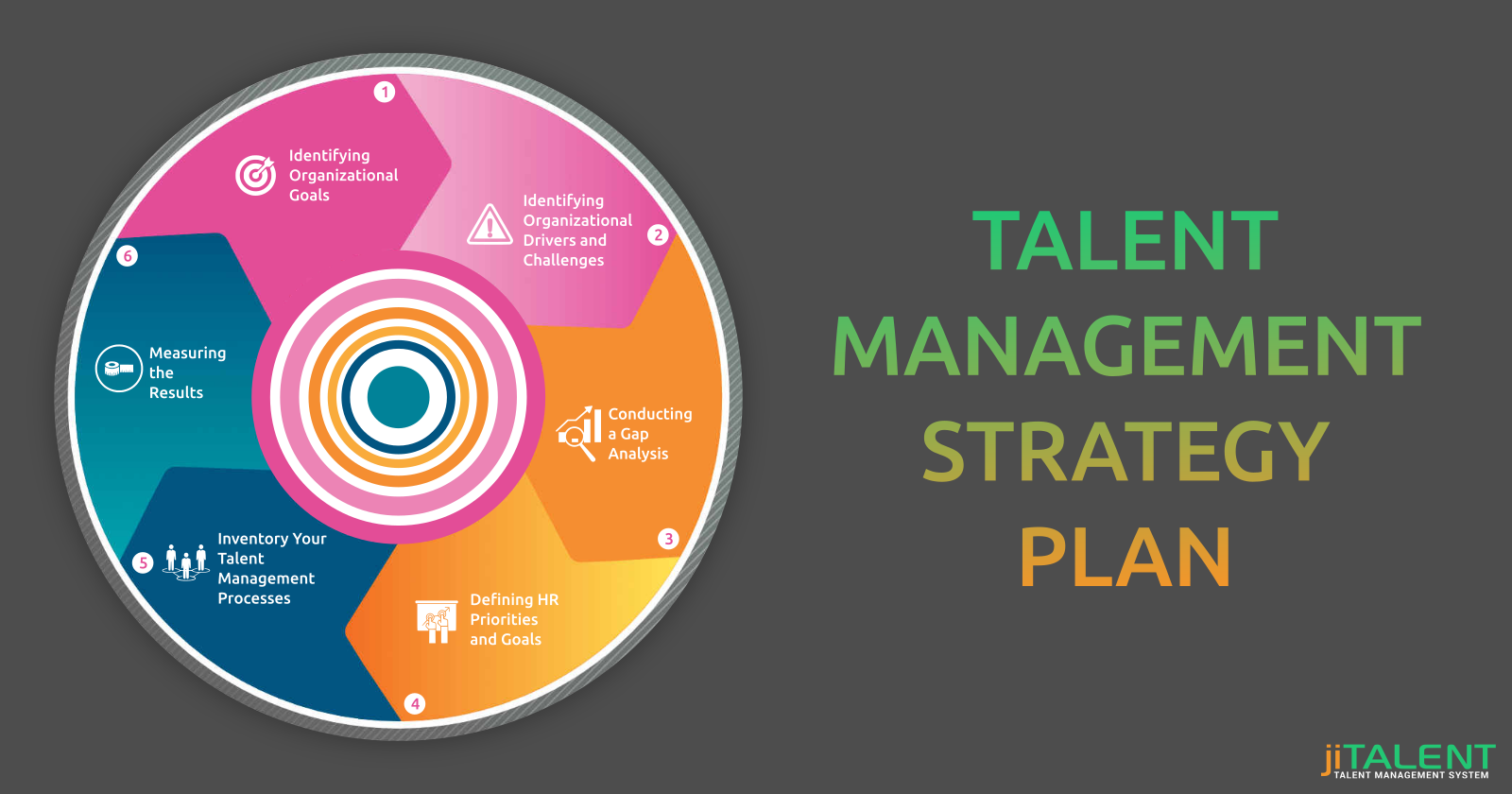Numerous HR teams battle to figure a talent management strategy that maps out their goals and needs for the year and binds these to their organizations' plan and goals. The HR team is not seen as playing a vital role in their organization, and talent management activities are not given the organizational importance they should have. Often the hardest part is starting with the right framework for the strategy and plan. To help you, this article walks through the typical steps in a strategic planning process, so you can use them to draft your own HR talent management strategy.
Talent Management Strategy Plan
1. Identifying Organizational Goals
What are your organization's strategic high-level goals or priorities? Are there any upcoming changes or new directions/initiatives for the organization? Start by listing each one of them.
2. Identifying Organizational Drivers and Challenges
Identify and consider the key drivers and challenges that could affect your organization's ability to accomplish its objectives. Consider both internal and external challenges. These could include things like an exceptionally competitive job market, new or changed legislation/regulations, results from an employee satisfaction survey, new technology, etc.
3. Conduct a Gap Analysis
Compare where your organization is today and where it needs to be, and identify any gaps that it needs to address with the end goal to accomplish its objectives. In identifying each gap, consider also the risk of not addressing the gap.
4. Define HR Priorities and Goals
In view of the objectives, challenges, and gaps you recognized, identify HR goals for the coming year to support organization in accomplishing its objectives. Keep in mind to make them SMART (Specific, Measurable, Achievable, Realistic/Relevant, Time-Bound) and link them to the applicable corporate goals.
5. Inventory Your Talent Management Processes
Next, do an inventory of your present HR talent management processes to decide whether you have to roll out any changes to the existing processes or add new processes to support your goals. Where gaps or required changes are recognized, set up plans to address them.
6. Measure the Results and Communicate Success
With your HR goals and objectives in place, it is critical to assess and measure their effectiveness and impart the results to the organization. As you take a shot at accomplishing every objective, ensure you track relevant measurements so you can report on progress and success, or take corrective action as needed. This is important to enable you to decide whether the objective was viable and worth retaining.
Summing Up
Setting up a talent management strategy, and executing it, is not an easy task, however definitely, one that will deliver benefits to both HR and your organization overall. With talent management best practices set up, you can fabricate a world-class workforce that is adjusted, propelled and conveying exceptional outcomes and most importantly, helping your organization accomplish its key objectives.










Share this post on: